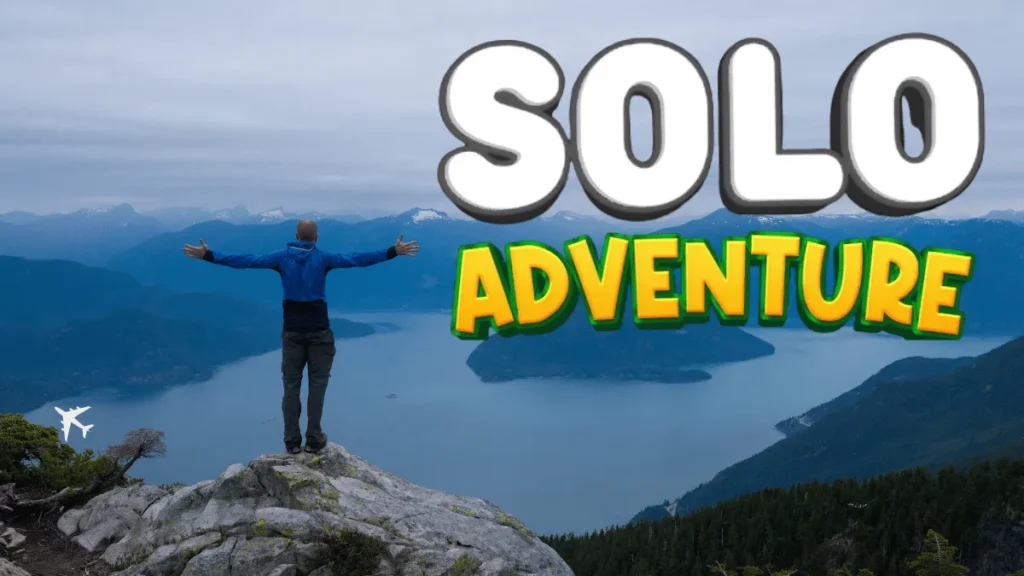
Solo adventures are empowering, restorative, and full of discovery — but they require deliberate planning. This guide walks independent explorers through smart safety planning: pre-trip prep, on-the-road tactics, essential gear, and how to respond if things go wrong. Use these actionable steps to reduce risk, increase confidence, and keep your focus on the experience.
1. Pre-Trip Research & Planning
- Know your destination. Research local laws, cultural norms, common scams, seasonal weather, and disease risks.
- Route and timing. Plan primary and alternative routes; note areas with poor connectivity or higher risk and build flexible timing.
- Local contacts. Save details for your country’s embassy/consulate, local emergency numbers, and any local friends or host contacts.
- Health preparation. Check vaccines, medication needs, and pack a basic first-aid kit tailored to your plan.
- Insurance. Buy travel insurance that explicitly covers solo activities you plan (hiking, water sports, medical evacuation).
2. Communication & Check-in Systems
- Shareable itinerary. Leave a copy of your detailed itinerary with at least two trusted contacts. Include dates, overnight locations, and planned activities.
- Regular check-ins. Agree a check-in frequency (daily/weekly), and what your contact should do if they don’t hear from you.
- Emergency signal plan. Establish a safe-word or phrase that means “I need help” — use it only in true emergencies.
- Offline options. Download maps and set up offline messaging apps or satellite communication for remote areas.
3. Smart Gear & Packing Essentials
- Pack for safety and self-sufficiency; less is more but include essentials.
| Item | Purpose |
|---|---|
| Portable phone charger + cable | Keep phone powered for navigation and calls |
| Local SIM / eSIM or satellite communicator | Reliable communication in low-connectivity areas |
| Multi-tool + duct tape | Quick repairs and utility |
| Lightweight first-aid kit | Treat common injuries and manage emergencies |
| Headlamp + extra batteries | Night navigation and emergencies |
| Whistle + mirror | Non-verbal distress signaling |
| Personal locator beacon (PLB) or satellite messenger | SOS in areas without cell service |
| Copies of important documents (digital & paper) | ID, insurance, emergency contacts |
| Small lock & cable | Secure bags or gear while resting |
| Money belt / hidden pouch | Protect cash and cards |
Also Check: Water Adventure Safety: Rip Currents, Tides & Simple Rescue Tips
4. Navigation & Situational Awareness
- Use redundant navigation. Carry physical maps and at least two digital navigation options.
- Trust your senses. If a place or person feels off, remove yourself calmly.
- Plan daylight travel through unfamiliar or higher-risk areas. Nighttime travel raises vulnerability.
- Blend in when possible. Avoid displaying expensive gear or large amounts of cash.
5. Accommodation & Transport Safety
- Choose vetted accommodations. Read recent reviews and verify exact location before booking.
- Check entry/exit options. Know multiple ways to leave your accommodation quickly.
- Transport awareness. Confirm driver and vehicle details for pre-booked rides; sit where you can exit easily.
- Inform hosts of early/late returns. Keep hosts updated on changes to your plan.
6. Personal Safety Practices
- Keep valuables minimal and secure. Carry only what you need during day trips.
- Use open, well-lit routes in populated areas. Avoid shortcuts through alleys at night.
- Alcohol & decision-making. Reduce consumption when alone; it impairs judgment and situational awareness.
- Meet people strategically. Arrange first meetings in public, busy places; tell a friend where you’re headed.
7. Emergency Protocols — Simple Step-by-Step
- Assess immediate danger. Move to a safer location if possible.
- Call local emergency services (know the number beforehand).
- Use your satellite messenger or PLB if out of cellular range.
- Contact your emergency contacts and your embassy/consulate if needed.
- Preserve evidence and document what happened for police/insurance when safe.
8. Mental Preparation & Solo Mindset
- Plan for solitude. Bring activities that keep you motivated and emotionally steady (journal, podcasts, music).
- Set realistic expectations. Not every day will be Instagram-perfect — accept detours as part of the adventure.
- Build small routines. Morning and evening rituals help keep structure and reduce stress.
9. Risk Matrix (Quick Reference)
| Situation | Likelihood (Low/Med/High) | Immediate Action |
|---|---|---|
| Lost / navigation failure | Med | Use offline map, backtrack to last known point, contact support |
| Minor injury | Med | First-aid, reduce activity, seek local clinic if needed |
| Theft / pickpocket | Med | Report to police, cancel cards, replace ID copies |
| Serious injury / evacuation | Low | Activate PLB/satellite messenger, call emergency services, notify insurer |
| Harassment or threatening encounter | Low | Move to public area, alert people, call police/contacts |
10. Post-Trip: Review & Share Wisely
- Debrief with your emergency contacts. Let them know you’re safe and share any incidents.
- Log lessons learned. Update your packing list and contingency plans.
- Share responsibly. If posting on social media, avoid real-time location tags that reveal you’re alone or away from home.
Final Checklist (Ready-to-Use)
- Itinerary shared with two trusted contacts.
- Confirmed travel & health insurance.
- Phone charged, offline maps downloaded, backup power available.
- Emergency contacts & embassy info saved locally and online.
- First-aid kit, PLB/satellite messenger (if needed), and essential tools packed.
- Accommodation vetted and entry/exit plan known.
- Check-in schedule set and agreed with contacts.
Conclusion
Solo adventures expand your limits and deepen self-reliance — but safety is the foundation that makes exploration sustainable and joyful. By combining careful research, clear communication plans, the right gear, and a prepared mindset, independent explorers can turn uncertainty into confidence. Plan smart, stay curious, and come home with stories — not regrets.
